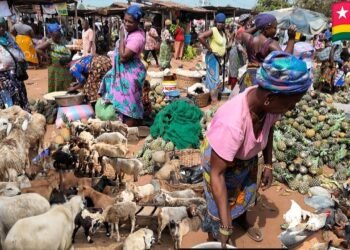President Nana Addo Dankwa Akufo-Addo has revealed that 170,000 jobs have been created through businesses operating under the One District, One Factory (1D1F) program.
The announcement came during his visit to Blue Skies Ltd in Nsawam, Eastern Region. Blue Skies Ltd, known for its commitment to “Adding Value at Source,” shares the same vision as the 1D1F policy of the Akufo-Addo administration.
The 1D1F initiative aims to boost local industrialization by setting up at least one factory in each district across Ghana, fostering economic growth and job opportunities at the grassroots level.
In a recent Facebook post following the event, Mr. Akufo-Addo expressed pride in his government’s achievements, announcing the successful development of 321 One District, One Factory (1D1F) projects.
These projects include the establishment of 211 new medium to large-scale enterprises and the strategic support of 110 existing enterprises through substantial capital investments.
These investments aim to expand production facilities and diversify product offerings, contributing to economic growth and job creation across various districts in Ghana.
“These enterprises have been established in one hundred and forty-two (142) districts across the country, across all sixteen (16) regions, and achieving fifty-four percent (54%) district coverage.
“The aspiration is to bring a 1D1F project to every district. Additionally, within this period, some one hundred and seventy thousand (170,000) jobs have been created under this novel 1D1F Programme by enterprises in operation.”
President Akufo-Addo
The 1D1F initiative reflects President Nana Addo Dankwa Akufo-Addo’s vision to transform Ghana’s economy. The goal is to shift Ghana’s economy from one that is dependent on import and export of raw materials to one that is focused on manufacturing, value addition, and export of processed goods.
Many of these raw materials are abundant in various districts but often go unused or are exported in their raw state.
Under this initiative, the President emphasized a private sector-led approach.
The government’s role is to create a favorable business environment that enables entrepreneurs to access funding from financial institutions and receive support services from government agencies to establish factories.
Ghanaian entrepreneurs will own, operate, and bear the risks and rewards of these ventures, driving economic growth and development at the local level.
Unemployment Trends, Youth Impact and Rural Growth

According to the Ghana Statistical Service’s Annual Household Income and Expenditure Survey Quarter Three Labour Bulletin, the average rate of unemployment in the country was 14.7 percent in the first three quarters of 2023.
The number of unemployed youth aged 15 to 35 in Ghana increased from approximately 1.2 million to over 1.3 million within a specific period, with consistently higher unemployment rates among females compared to males.
According to a survey, the youth unemployment rate experienced a slight decrease only in the second quarter of the previous year. However, a significant rise in female unemployment between the fourth quarter of 2022 and the first quarter of 2023 widened the gender gap in unemployment by 2023 compared to 2022.
During the period from the first quarter to the third quarter of 2023, around 440,000 individuals entered the labor force and more than 60.0 percent of them secured employment.
Interestingly, across both 2022 and 2023, there has been a consistent trend of more females being employed than males, with the employment gap between genders averaging about 600,000 to 900,000 individuals.
Furthermore, the employment situation in 2023 showed stability in urban areas, with the number of employed individuals remaining relatively consistent throughout the first three quarters, following some quarterly fluctuations in 2022.
Conversely, in rural areas, the number of employed individuals saw continuous growth for five consecutive quarters starting from the second quarter of 2022, before experiencing a decline in the third quarter of 2023.
This trend highlights evolving dynamics within the labor market settings during 2022 and 2023.
READ ALSO: Israel’s Chance To Recover Captives Mired With Hardened Stance























